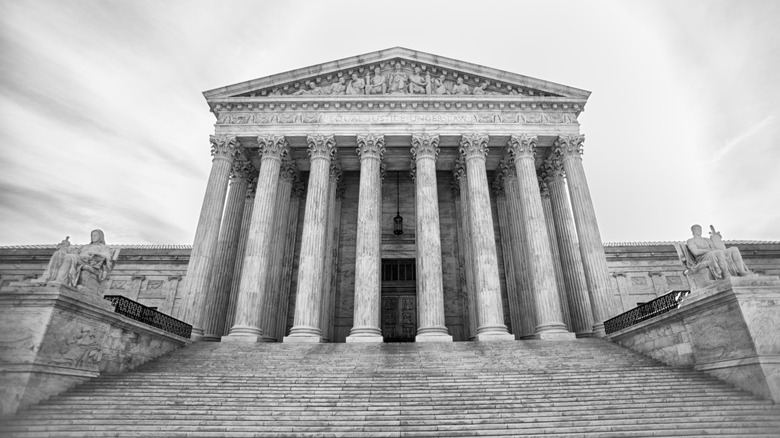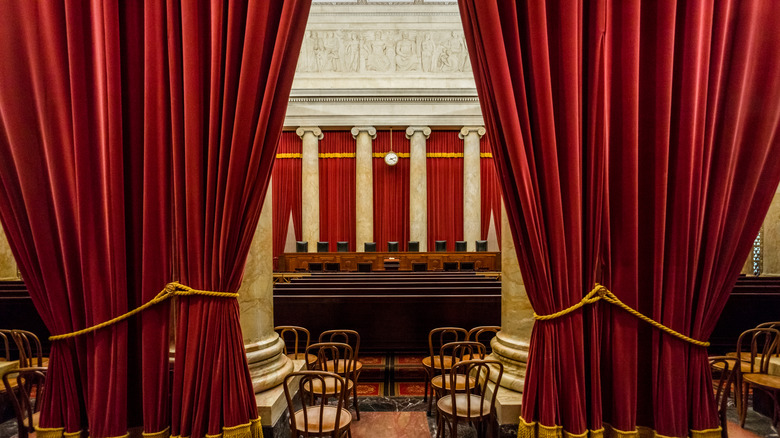Here's What It's Like Serving On The Supreme Court
The Supreme Court constitutes one of America's three branches of government, thus representing a vital component in the country's separation of powers. While the number of justices has varied over its 232-year history, they have been picked by sitting presidents for Senate approval since George Washington's first term in office. Unlike other positions such as the presidency where term limits were eventually emplaced, the Supreme Court has never had any. The logic behind this was in part to avoid partisan influence from subsequent administrations, though many have claimed that this is hardly a solution to that issue (via the Supreme Court).
For the justices themselves, there are a number of changes that come with appointment to the court. According to Quartz, the salary of a justice is roughly $250,000 a year, which can add up with the aforementioned lifetime appointment. Despite the salary, the workloads expected of them can be low, with the court only hearing a relative fraction of the cases presented to it (via U.S. Courts).
Supreme Court Justices work nine months out of the year
Justices of the Supreme Court generally have a lot of free time, largely thanks to the efforts of the clerks who aid them in the small number of cases they choose to hear. This combined with their pay allows them to often spend the three months between sessions on vacation, traveling all over the world as tourists and speakers at events (via Quartz). Anonymity has been fairly easy for them when traveling, as it was found that many Americans could not identify some or all of the sitting Justices (via New York Magazine).
According to ABC, while such things are a privilege that few Americans can enjoy, the position has been described as "isolating." Justices are not obligated to make statements on their cases, and take great lengths to place themselves in a mental vacuum free of public speculation. As any judge can become the focus of national and international attention in some instances, certain cases presented to the Supreme Court require extreme resilience on the part of the justices to remain impartial (via Duke Law School).

